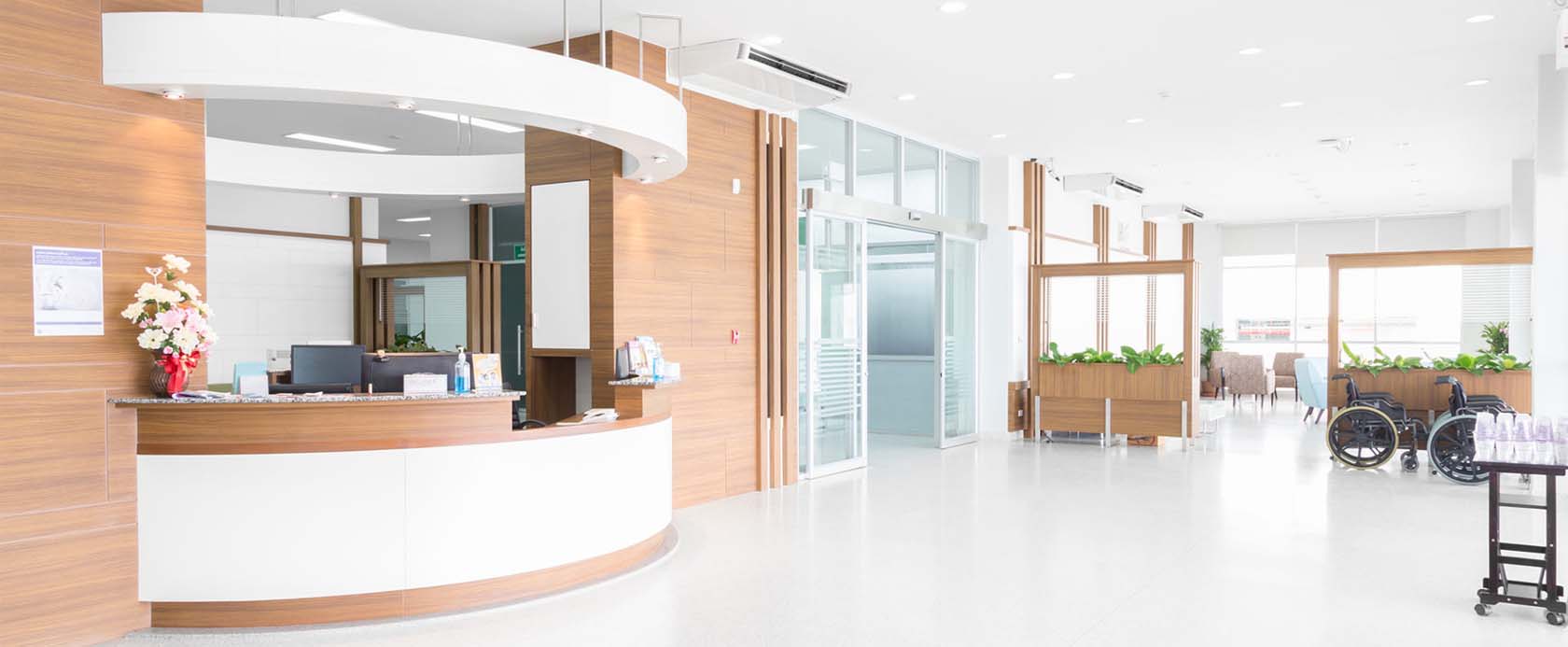
Medical practices are changing at such a fast rate: EHRs have now replaced paper charts, mobile equipment can chart patient notes, and video calls have allowed remote access to patients. Experts agree that a practice’s medical office design and space affect a patient’s mood and feeling.
There have been many significant changes in design requirements for medical practices over the last 38 years. Over time, the examination room has evolved and become the center of interaction between the patient and the doctor. It has also grown in size because of the nature of work being performed there.
Gone are the days when patient charts would fill up three filing cabinets for every physician. A new medical office design for a solo physician means one or two exam rooms, a consultation room, and a small lab or processing station. Nowadays, medical spaces are designed with the theme “consolidation” and “partnership” with other physicians, hospitals, or health systems in mind. This is so medical providers can share space and spread out overhead costs for new technology or additional staff members to manage operations.
If you’re planning to renovate your medical office, but your budget is limited, don’t worry! The beauty of committing to redesign your office or building is that you can customize your project’s scope and timeline to suit your needs. Below are some factors you should consider designing your new space.
.tdi_67_44b.td-a-rec{text-align:center}.tdi_67_44b .td-element-style{z-index:-1}.tdi_67_44b.td-a-rec-img{text-align:left}.tdi_67_44b.td-a-rec-img img{margin:0 auto 0 0}@media (max-width:767px){.tdi_67_44b.td-a-rec-img{text-align:center}}
Different Space Requirements
Practice design and configuration has gone through huge changes over time. Several factors affect it as well: the use of new technology, the need to improve patient flow, the need to improve staff efficiency, and reassigning new space available. According to experts, there are several ways that medical practices can change up their physical space. They are as follows:
-
Physician’s Office
Most physicians no longer have an office dedicated to them, including the equipment they need for their professions, such as human skeletons, pharmaceutical equipment, and medical diplomas on the wall. In most cases, several physicians share a single space for consultations, freeing up space for more exam rooms, where medical providers brief their staff on the next step for their patients.
-
Private Patient Registration Area
In compliance with HIPAA privacy rules, seating patients near the check-in desk could pose a risk to a patient’s privacy. Many medical practices now opt for a separate patient registration area that gives patients more privacy for check-in, payment, and completion of medical and social histories.
-
Bigger Exam Rooms
Now that the medical field has started following a more consultative relationship between physician and patient, patients are now bringing family members to help them recall what the physician has to say and support it. To accommodate more people, exam rooms are also increasing in size. There must be triangulation between the patient, the guest, and the physician. The doctor must also have access to a computer to input all the relevant information from interviewing the patient.
-
Use Of EHRs
Now that paper charts are no longer used as much as they used to, chartrooms are starting to disappear and become a thing of the past. As a result, medical practices can free up not just physical space but also staffing needs. Some medical offices use tablets from which patients can register, pay, and fill out questionnaires. Instead of having patients fill out pages of paper forms manually scanned into the EHR system, electronic devices such as tablets are now integrated with EHRs.
-
Cloud-based IT Solutions
Depending on how big your practice is and what kind of technology choices and infrastructure you have, you may not have a server room or centralized computing center equipped with desktop computers, fax machines, printers, and scanners. If you want to use a cloud-based IT solution for your practice, you may only need a local area network (LAN) and WiFi-capable equipment such as laptops, tablets, or mobile phones. With a cloud solution, you not only save on space requirements, but you’re also able to save more on facility requirements such as air conditioning and electrical needs.
Flow of Patients
If you plan on expanding your medical office design to accommodate more functions such as administration and in-house billing, it would be wiser to build a new facility instead of redesigning the old one.
There are several benefits that a well-designed medical office can offer patients and staff. For example, removing chartrooms can free up space for more important things such as more waiting rooms, consultation rooms, and separate check-in and check-out areas. All of this can significantly improve the flow of patients and the efficacy of the medical staff.
Technology Factor
Medical practitioners need to decide on the kind of technology they want to include in their medical office design. It’s always better to have an understanding of what your design needs right away, instead of having to go back and forth, modifying your space due to last-minute technology change or addition.
Depending on your budget, you may or may not end up working with an IT consultant, but it’s much better to speak with a tech expert before you start construction.
In addition to the benefits of EHRs, new technology can also bring about comfort and satisfaction to patients, and it can make patient registration and insurance verification a lot easier. Patients can register, pay their copays and deductibles, fill out social and medical histories, or short patient surveys easily when you transfer information from paper forms to the EHR.
Patient Portal
Most experts can attest to how the introduction of the patient portal changed the way physicians practice medicine. Patient portals probably brought about the most significant change to a medical practice’s workflow. Before patient portals were implemented, staff members were assigned to answer, triage, and return patient phone calls. Nowadays, patients can now leave secure messages for their physicians or nursing staff through the portal. They can also receive e-mail notifications for their questions or requests.

